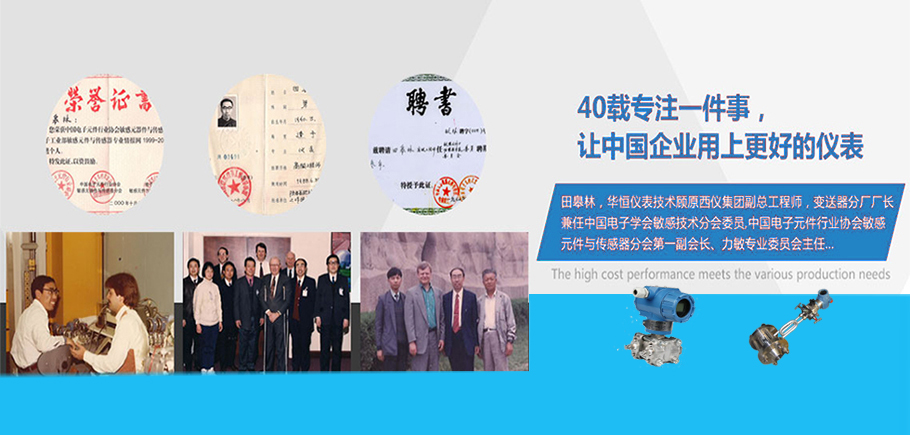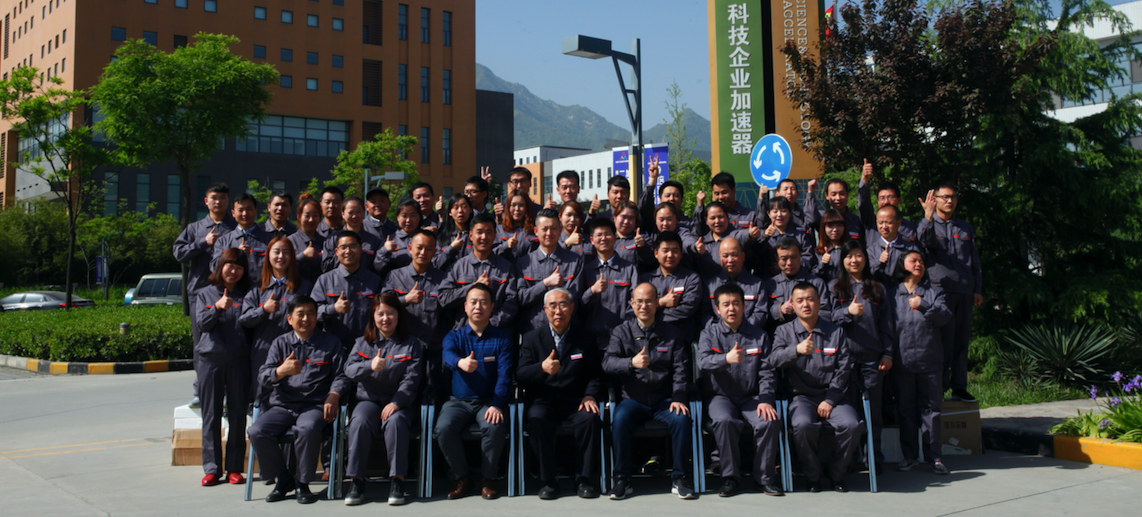| 电容式压力变送器故障处理 |
| 信息来源: 压力变送器生产 | 2019-04-15 点击量: 5623 |

电容式压力变送器故障处理是怎样解决的?西安华恒仪表制造有限公司介绍:变送器测量部分的检查:变送器测量部分产生的故障,都会引起变送器无输出或输出不正常,因此应首先检查变送器的测量敏感部件。
How to deal with the fault of capacitive pressure transmitter?Xi'an Huaheng Instrument Manufacturing Co.,Ltd.Introduction:Transmitter measurement part inspection:Transmitter measurement part of the failure,will cause no output or output abnormal transducer,so we should first check the transducer measurement sensitive components.
1.拆下法兰,检查敏感部件隔离膜片有无变形,破损和漏油现象发生。
2.拆下补偿板,不取出敏感部件,检查插针对壳体的绝缘电阻,在电压不超过100V的情况下,绝缘电阻不应小于100MΩ。
3.接通电路和气路,当压力信号为量程上限值时,关闭气源,输出电压和读数值应稳定不动。如果输出电压下降,则说明变送器有泄漏,可用肥皂水检查出泄漏部位。
1.Remove the flange and check whether the diaphragm of the sensitive parts is deformed,damaged and oil leakage.
2.Remove the compensating plate,do not take out the sensitive parts,check the insulation resistance inserted into the shell,in the case of voltage not exceeding 100V,the insulation resistance should not be less than 100M.
3.Turn on the circuit and gas circuit.When the pressure signal is the upper limit of the range,turn off the gas source,and the output voltage and reading value should be stable.If the output voltage drops,it means that the transmitter has leakage,and the leak can be detected with soapy water.
变送器电路部分的检查:
Check the circuit part of the transmitter:
1.接通电源,检查变送器输出端电压信号的状态。若无输出电压,应首先检查电源电压是否正常;是否符合供电要求;电源与变送器及负载设备之间有无接线错误。如果变送器接线端子上无电压或极性接反均可造成变送器无电压信号输出。排除上述原因,则应进一步检查放大器板线路中元件有无损坏问题;线路板接插件有无接触不良现象,可采取对照正常仪表的测量电压与故障仪表对应的测量电压相比较的方法,确定故障点,必要的情况下可更换有故障的放大器板。在对流量型变送器检查时,对J型放大器板应特别要注意采取防静电措施。
1.Turn on the power supply and check the state of the output voltage signal of the transmitter.If there is no output voltage,it should first check whether the power supply voltage is normal;whether it meets the requirements of power supply;whether there are wiring errors between power supply and transmitter and load equipment.If there is no voltage or polar connection on the terminal of the transmitter,no voltage signal output of the transmitter can be produced.In order to eliminate the above reasons,it is necessary to further check whether the components in the circuit of amplifier board are damaged or not;if the circuit board connectors are not in good contact,the method of comparing the measured voltage of normal instrument with the corresponding measured voltage of fault instrument can be adopted to determine the fault point,and if necessary,the faulty amplifier board can be replaced.When checking the flow transducer,special attention should be paid to the anti-static measures for the J-type amplifier board.
2.接通电源,在给定输入压力信号后,若变送器输出过高(大于10VDC),或输出过低(小于2.0VDC),且改变输入压力信号和调整零点、量程螺钉时输出均无反应。对于这类故障,除检查变送器测量部分敏感部件有无异常外,应检查变送器放大器板上“振荡控制电路部分”工作正常与否。高频变压器T1-12之间正常峰值电压应为25~35VP-P;频率约为32kHz。其次检查放大器板上各运算放大器的工作状况;各部分的元器件有无损坏问题等。此类故障需要更换放大器板。
2.Turn on the power supply,if the output of the transmitter is too high(greater than 10VDC)or too low(less than 2.0VDC)after the given input pressure signal,the output will not respond when the input pressure signal is changed and the zero and range screw is adjusted.For such faults,besides checking whether the sensitive parts of the transducer measurement part are abnormal,the"oscillation control circuit"on the transducer amplifier board should be checked whether it works properly or not.The normal peak voltage between T1-12 of high frequency transformer should be 25-35 VP-P,and the frequency should be about 32 kHz.Secondly,check the working condition of the operational amplifiers on the amplifier board;the components of each part have no damage problems,etc.This kind of fault requires replacing the amplifier board.
3.变送器在线路设计和工艺装配质量上要求都十分严格,在实际使用中对出现的线路故障,经检查确认后最好与生产厂家联系更换其故障线路板,以确保仪表长期工作的稳定性和可靠性。
3.Transmitter has strict requirements in line design and process assembly quality.In the actual use of line faults,it is better to contact the manufacturer to replace the faulty circuit board after checking and confirming,so as to ensure the stability and reliability of the instrument in long-term operation.
现场故障检查:
施工现场出现的故障,绝大多数是由于使用和安装方法不当引起的,归纳起来有几个方面。
On-site fault check:
Most of the faults on the construction site are caused by improper use and installation methods,which can be summed up in several aspects.
1.一次元件(孔板、远传测量接头等)堵塞或安装形式不对,取压点不合理。
2.引压管泄漏或堵塞,充液管里有残存气体或充气管里有残存液体,变送器过程法兰中存有沉积物,形成测量死区。
3.变送器接线不正确,电源电压过高或过低,指示表头与仪表接线端子连接处接触不良。
4.没有严格按照技术要求安装,安装方式和现场环境不符合技术要求。
1.The blockage or installation of primary components(orifice plate,remote transmission measuring joint,etc.)is not correct,and the pressure point is unreasonable.
2.Leakage or blockage of pressure pipes,residual gas in liquid filling pipes or residual liquid in gas filling pipes,and sediment in flange of transducer process form dead zone of measurement.
3.The transmitter connection is incorrect,the power supply voltage is too high or too low,indicating that the contact between the meter head and the instrument terminal is not good.
4.Installation is not strictly in accordance with the technical requirements.Installation methods and site environment do not meet the technical requirements.
以上出现的故障都会引起变送器输出不正常或测量不准确,但经过细心检查,严格按照技术要求使用和安装,及时采取有效措施,问题都可以排除,对不能处理的故障,应将变送器送到实验室或生产厂家做进一步检查。
Above faults will cause abnormal output or inaccurate measurement of the transmitter,but after careful inspection,strict use and installation in accordance with technical requirements,timely and effective measures can be taken to eliminate the problems.For failures that cannot be handled,the transmitter should be sent to the laboratory or manufacturer for further inspection.






